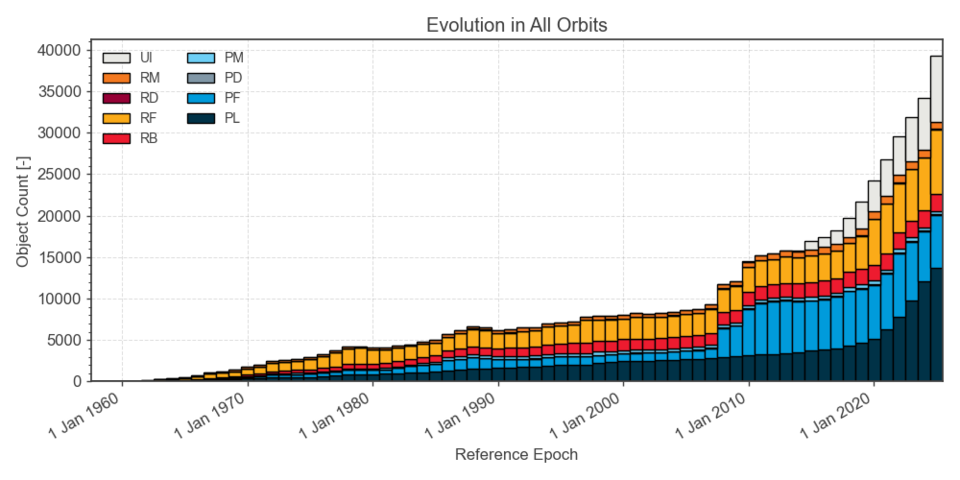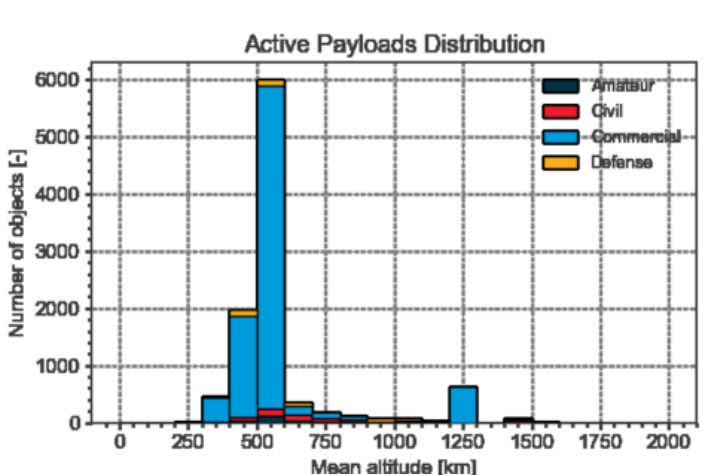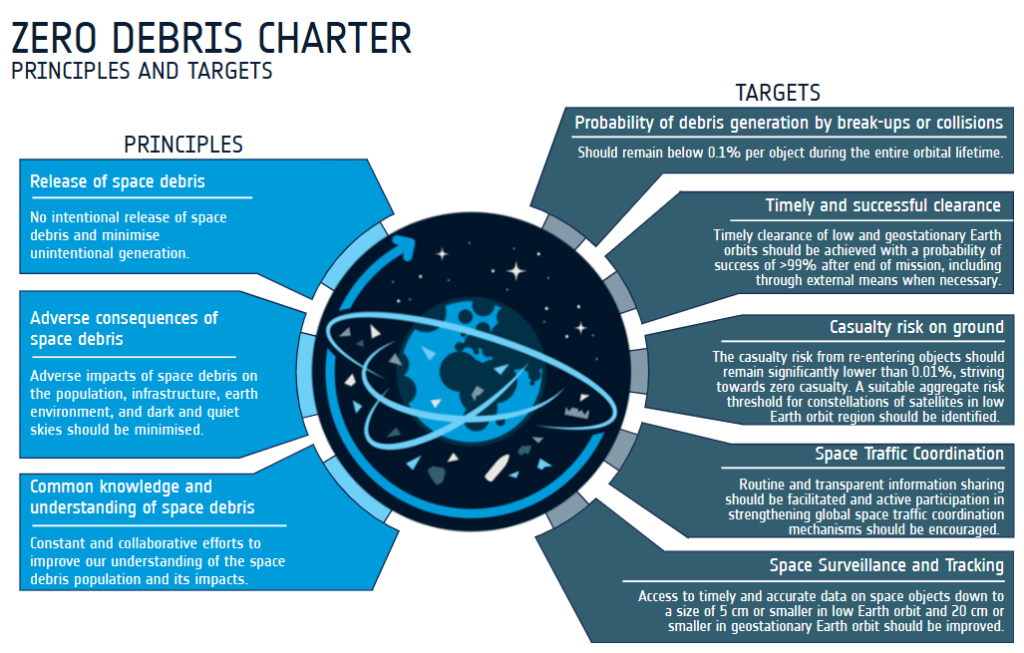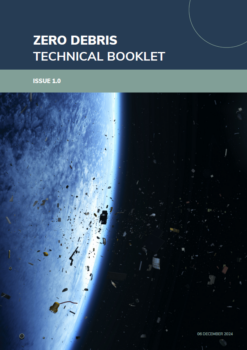Understanding the debris issue
What is space debris?
Space debris refers to non-functional, human-made objects orbiting Earth. This includes defunct satellites, spent rocket stages, and fragments resulting from in-orbit collisions or disintegration events.
The amount of debris grows fast
The amount of space debris in orbit continues to rise quickly. About 40 000 objects are now tracked by space surveillance networks, of which about 11 000 are active payloads.
However, the actual number of space debris objects larger than 1 cm in size is estimated to be over 1.2 million, with over 50.000 objects of those larger than 10 cm.

Why does it matter?
As the number of objects in orbit continues to grow, so does the risk of collision with operational satellites, spacecraft, and the International Space Station (ISS). Due to the high velocity, even collisions with the smallest fragments can cause severe damage, lead to the loss of critical functionality, or result in catastrophic failures — posing a real threat to astronauts’ safety and the sustainability of space activities.
Moreover, the dramatic rise in annual payload launches, particularly of communication satellites clustered around the 500 km altitude range, has intensified orbital congestion.
This increases the frequency of conjunction alerts and brings us closer to a critical tipping point: Kessler Syndrome, where cascading collisions could render entire orbital regions unusable.

The Zero Debris approach
In response, ESA launched its Zero Debris approach, building on the resolution of the ESA Council at Ministerial Level 2022. The objective is to encourage partners and other actors to pursue similar paths, thereby collectively putting Europe at the forefront of sustainability on Earth and in space, while preserving the competitiveness of its industry.
ESA’s Internal Commitment to Zero Debris
The Zero Debris approach is ESA’s ambitious plan to overhaul its internal space debris mitigation requirements. Drawing on more than a decade of collaborative agency-wide work, this initiative will guide ESA towards becoming debris-neutral by 2030. It’s not just about targets—it’s about investing in the technologies and practices that will get us there.
A Collective Effort
Since ESA has no regulatory authority beyond its own missions, its strategy is based on raising awareness and supporting the global space community in co-developing a collective framework for debris mitigation.
From vision to action
Zero Debris Charter
A collaborative effort led to the launch of the Zero Debris Charter, a non-binding initiative that outlines ambitious guiding principles and jointly defined, measurable targets to reduce space debris. It represents a community-driven step toward more sustainable space operations.

Zero Debris Technical Booklet

Another key milestone is the Zero Debris Technical Booklet, released publicly in January 2025. Created through collective input, it serves as an openly accessible resource compiling needs, solutions, and key enablers on the path to Zero Debris.
What’s next?
To keep the community engaged and growing, ESA and its partners will coordinate upcoming webinars, virtual conferences, newsletters, the Zero Debris Week and innovation support campaigns. These initiatives aim to foster knowledge-sharing and accelerate progress toward a sustainable orbital environment.
